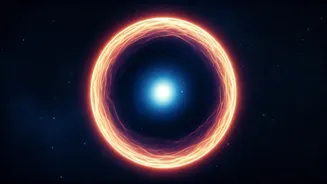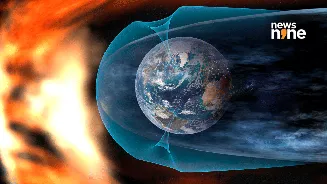Solar Eruptions Explained
Solar flares, also referred to as solar eruptions, are sudden releases of energy from the sun, usually associated with sunspots. These powerful bursts
emit electromagnetic radiation, which includes X-rays and radio waves, capable of reaching Earth in just minutes. This is especially true when the solar flares emanate from the corona of the Sun. These flares are categorized into classes based on their intensity: A, B, C, M, and X, with X-class flares being the most intense. When these flares erupt, they have the potential to cause a cascade of events that can impact Earth, potentially leading to geomagnetic storms and even affecting technology on Earth. The recent spate of solar eruptions signals the sun's increased activity and could indicate potential space weather events that could reach our planet.
Geomagnetic Activity Unveiled
Geomagnetic activity refers to disturbances in Earth's magnetosphere caused by solar wind. When solar flares erupt, they can also produce coronal mass ejections (CMEs), releasing vast amounts of plasma and magnetic fields into space. If a CME strikes Earth's magnetosphere, it can trigger a geomagnetic storm, resulting in fluctuations in Earth's magnetic field. These storms vary in intensity, ranging from minor to extreme, and are measured using the Kp index. Minor storms might cause some disruptions, while severe storms could lead to power grid failures, communication interruptions, and even damage to satellites. The current solar activity has prompted scientists to issue alerts, anticipating possible geomagnetic effects resulting from these solar eruptions. The impact of these storms, however, is dependent on several factors, including the strength of the solar flare and the trajectory of the CME.
Potential Consequences Outlined
The solar eruptions observed could result in minor geomagnetic activity, posing several potential consequences. At a basic level, this could mean displaying the aurora borealis or the northern lights, especially at lower latitudes than usual. In more severe cases, there could be disruptions to power grids, communication systems, and GPS signals. Satellites orbiting Earth are also susceptible to damage from the increased radiation and charged particles emitted during solar events. These risks are carefully monitored by space weather agencies, which issue alerts to minimize potential damage. While most effects are expected to be minor, vigilance is still crucial, and protective measures may be needed in specific circumstances. It is also important to note that such activity is a normal part of the sun's cycle, though the intensity and frequency of these events can vary.
Monitoring and Predictions
Space weather experts continually monitor the sun's activity and its potential impact on Earth. Using data from satellites and ground-based instruments, they track solar flares, CMEs, and the resulting effects on the magnetosphere. The data collected allows them to forecast geomagnetic storms, which gives the opportunity to prepare for potential disruptions. The Space Weather Prediction Center, part of the National Oceanic and Atmospheric Administration (NOAA), provides real-time information and forecasts. They also issue alerts for geomagnetic storms, which can assist various sectors, including power companies and satellite operators, to take precautionary measures. Regular updates help the public remain informed, and scientists use these observations to improve their forecasting models. Being informed about space weather helps in understanding and mitigating the associated risks.













